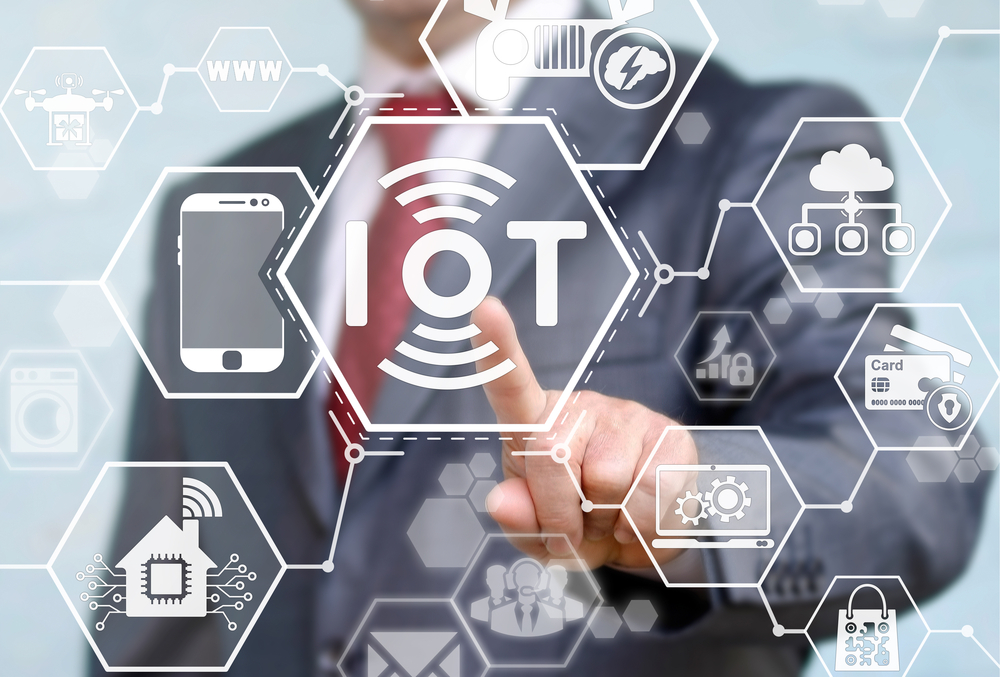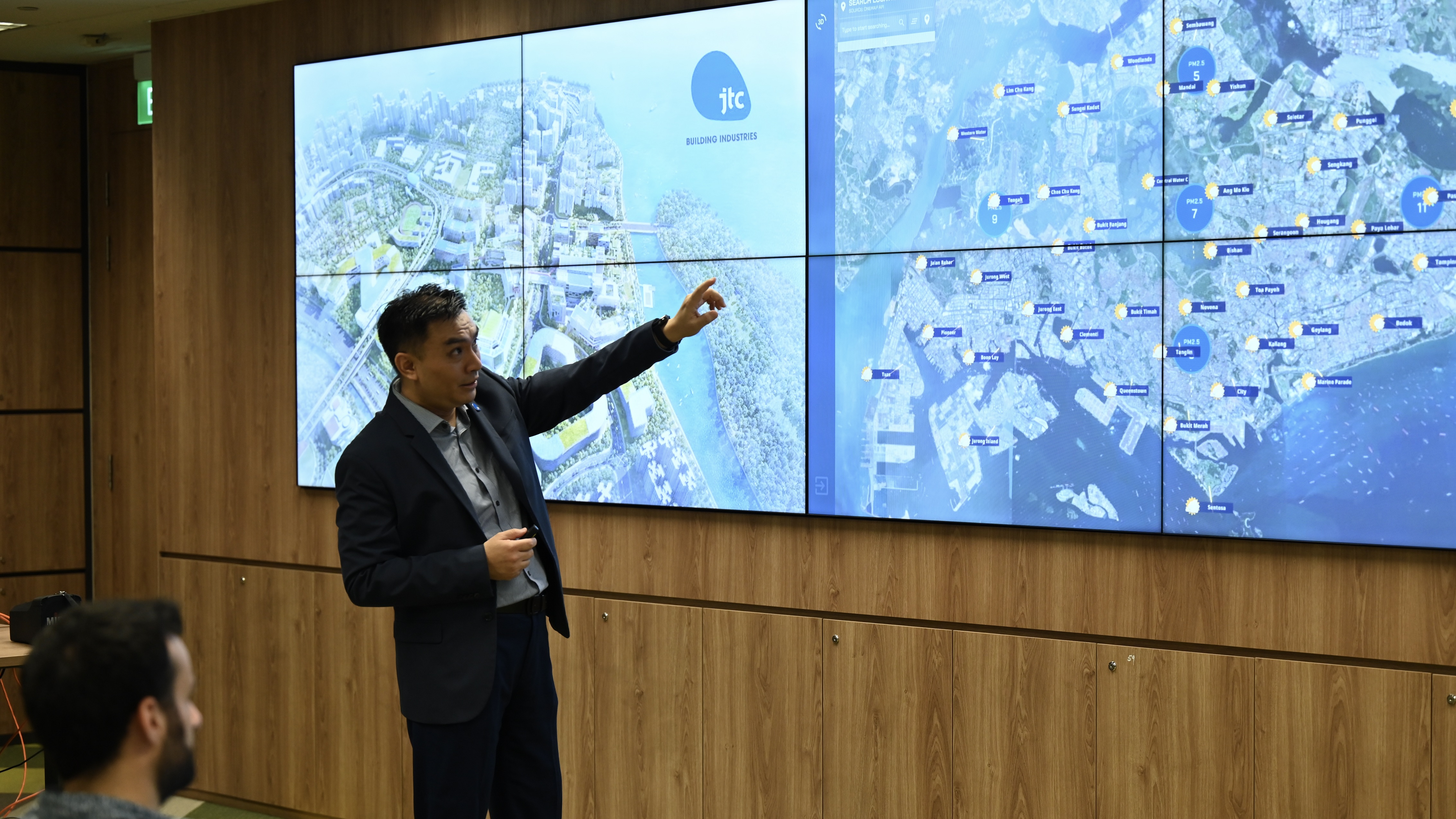What is the Internet of Things (IoT)?
Wondering about the Internet of Things? Here's our guide to all things connected...

Drew Turney

The Internet of Things (IoT) refers to the growing ecosystem of physical devices from everyday household appliances and wearables to industrial machinery — that are equipped with sensors and software to communicate via the internet. These devices collect, exchange, and often act on real‐time data to automate processes and improve efficiency.
Breakthroughs in miniaturisation and connectivity mean that sensors are now seamlessly integrated into our daily lives. For example, smart speakers, virtual assistants, and even connected thermostats and security systems continuously share data with central hubs, optimising everything from energy usage in homes to complex industrial operations.
While the concept dates back decades — with early experiments like the 1981 vending machine at Carnegie Mellon — the modern IoT has exploded in scale. However, the term "Internet of Things" wasn't popularized until the late 1990s by Kevin Ashton. The convergence of technologies like sensors, microprocessors, and wireless networks has propelled the IoT from a niche concept to a transformative force across various sectors.
According to IoT Analytics, there were approximately 16.6 billion IoT devices in 2023, with forecasts expecting this number to reach about 18.8 billion by the end of 2024 and surge to nearly 40 billion by 2030. In contrast, traditional “human” devices (such as smartphones and laptops) remain in the region of 10–11 billion globally, highlighting the IoT’s exponential growth.
How the IoT is being deployed
We have so far seen two major applications of the IoT, those in the consumer space and those in industry.
In the consumer space, smart speakers serve as a flagship example of IoT devices that have become integral to daily life. According to the latest global market report from The Business Research Company, the smart speakers market was valued at approximately US$14.36 billion in 2024 and is projected to reach US$19.01 billion in 2025, growing at a CAGR of around 32.4%.
This remarkable growth is driven by the increasing adoption of voice-activated technology in smart homes — whether checking a video doorbell, controlling lighting and thermostats, or streaming content via platforms like Google Nest or Amazon Alexa. As consumers embrace these multifunctional devices, they become part of an ever-expanding IoT ecosystem.
Sign up today and you will receive a free copy of our Future Focus 2025 report - the leading guidance on AI, cybersecurity and other IT challenges as per 700+ senior executives
Just as much growth is happening in the business or industrial sectors. Sales, marketing, and CRM platforms from providers like Salesforce and Atlassian are connecting data from every corner of a company, its suppliers, and customers to help owners extract value from business intelligence (BI).
This interconnectedness is transforming business operations, enabling data-driven decision-making and improved efficiency. Industry analysts highlight the growing adoption of the IoT in various business processes.
The world's busiest shipping lanes are now managed by IoT devices, with remote sensors automatically logging cargo and syncing the data from a port to a central hub. Companies like ABB and CargoMetrics offer IoT solutions for the maritime industry, optimizing routes, tracking shipments, and improving port operations. The IoT in logistics is revolutionizing supply chain management and global trade.
RELATED WHITEPAPER

In healthcare, patients are wearing a variety of devices. Initially this started with familiar technology, such as a Fitbit wristband that counts your daily steps. However, more advanced technology is appearing, including the Nanowear SimpleSENSE, an undergarment that captures and reports on temperature, blood pressure, blood flow hemodynamics, lung volume, and fluid and ECG readings. Health IoT devices that capture such data can send it directly to your doctor, where they can make diagnoses and prescribe treatments via text or email.
In agriculture, sensors in the ground can measure moisture or nutrient content and pass this data to irrigation or fertilization systems. Harvest monitoring can augment the expertise of farmers with atmospheric readings to make sure harvesting occurs at exactly the right time.
In transportation, the convergence of the IoT with advanced connectivity is paving the way for “smart roads.” As electric vehicles become increasingly equipped with sophisticated driver-assistance technologies, infrastructure providers are planning to deploy sensors under asphalt and in traffic control systems.
Global EV sales are forecast to exceed 20 million units in 2025, and according to Gartner, the worldwide EV fleet is expected to reach 85 million by the end of 2025. These rapidly growing numbers are driving investments in smart road systems that can collect real-time data to divert vehicles from congested areas, optimize traffic flow, and even trigger emergency responses automatically in the event of an accident.
The technology behind the IoT
Any IoT system comprises three essential components: sensors, connectivity, and analytics.
Sensors are as varied as the applications that use them. Most of us are used to simple audio or visual data when asking Alexa to cue up the latest Amazon series or check who's at the door through a smart home app.
But IoT sensors can measure almost everything you can think of. A GPS receiver can pinpoint an object's location. Digital thermometers can measure the temperature anywhere from the living room to the greenhouse, making automated adjustments. Barometers can measure humidity in office HVAC systems to make sure they operate at peak efficiency.

Weather data and water levels from across Singapore are monitored using digital twin technology in an effort to better predict flash-flooding (story link)
Weather data and water levels from across Singapore are monitored using digital twin technology in an effort to better predict flash-flooding (story link) (Image credit: Singapore GovTech)
Motion and proximity sensors that automatically open doors have been with us for decades, but as part of an IoT network they can contribute to the efficient use of a building by helping build a digital twin 3D model.
Pressure sensors and scales measure displacement, weight, or internal air pressure, with applications ranging from tyre inflation to maintaining comfortable air travel. These sensors contain onboard microprocessors that continuously gather data on usage patterns and measurements, which is then transmitted to a central hub via various connectivity methods.
IoT connectivity, like its consumer internet counterpart, varies depending on the specific application. Simple systems may utilize wired connections such as Ethernet, while larger, geographically dispersed systems often rely on Wi-Fi networks, either public or private. For industrial applications demanding minimal latency, 5G is the preferred solution. Smaller-scale systems with numerous moving components frequently employ RFID or Bluetooth for communication.
The true power of the IoT lies in data analytics. Data aggregated from various sources, be it a farm, retail store, factory, or home, is analyzed to provide a comprehensive overview of system performance. This analysis helps identify production bottlenecks, predict potential equipment failures before they occur, and uncover efficiencies that translate into cost and time savings.
Despite its transformative potential, the IoT still faces significant challenges. Hardware manufacturers, engineers, and inventors grapple with issues such as data security, privacy concerns, and the need for universal compatibility standards. These challenges must be addressed to fully realize the promise of a seamlessly interconnected world.
Why is the IoT so important?

Glasgow recently opened its Smart Things Accelerator Centre (STAC), a private-public partnership designed to help drive IoT innovation across the city (story link)
The IoT isn’t just a technological novelty — it’s fundamentally reshaping the way we live and work. On the consumer front, the IoT has introduced unprecedented convenience; our devices now sync with our calendars to suggest optimal travel routes or automatically reorder essentials. In the industrial realm, IoT drives digital transformation.
Smart cities utilize the IoT to optimise traffic, reduce energy waste, and improve public safety, while manufacturers harness connected machinery and predictive maintenance to streamline operations.
The rapid expansion of the IoT is also opening up new revenue streams and competitive advantages. For businesses, data-driven insights enable more informed decision-making and the development of innovative business models. Moreover, sustainability initiatives are increasingly powered by the IoT, whether through energy meters that reduce wastage or sensors that ensure precision farming, supporting a greener future.
In the UK and beyond, innovation hubs and accelerators are emerging to support IoT startups and research. These initiatives not only foster new technological advancements but also contribute significantly to national competitiveness in the digital economy.
Is the IoT safe?
Security is a critical concern for the IoT. The increasing number of connected devices expands the potential attack surface for cybercriminals. Vulnerabilities in IoT devices can be exploited to gain access to sensitive data, disrupt operations, or even cause physical damage.
The infamous casino fish tank hack in 2016 highlighted the risks associated with insecure IoT devices. Other vulnerabilities include weak default passwords, lack of software updates, and insufficient encryption.
Addressing IoT security challenges requires a multi-pronged strategy. Security must be prioritized from the outset, with manufacturers embedding robust security measures throughout the entire device lifecycle, from design and development to deployment and ongoing maintenance.
Users play a crucial role in maintaining security by replacing default passwords with strong, unique credentials and enabling robust authentication mechanisms. Regularly updating device software with the latest security patches is essential to mitigate known vulnerabilities.
Network segmentation, isolating IoT devices from critical networks, can limit the damage from potential breaches. Finally, encrypting data both in transit and at rest safeguards sensitive information from unauthorized access.
The UK government's "Secure by Design" initiative aims to improve the security of consumer IoT devices by establishing minimum security requirements for manufacturers. Ongoing efforts to standardize security protocols and best practices are vital for ensuring the safety and reliability of the IoT.
Rene Millman is a freelance writer and broadcaster who covers cybersecurity, AI, IoT, and the cloud. He also works as a contributing analyst at GigaOm and has previously worked as an analyst for Gartner covering the infrastructure market. He has made numerous television appearances to give his views and expertise on technology trends and companies that affect and shape our lives. You can follow Rene Millman on Twitter.
- Drew TurneyFreelance journalist
-
 Microsoft wants to replace C and C++ with Rust by 2030
Microsoft wants to replace C and C++ with Rust by 2030News Windows won’t be rewritten in Rust using AI, according to a senior Microsoft engineer, but the company still has bold plans for embracing the popular programming language
-
 Google drops $4.75bn on data center and energy firm Intersect
Google drops $4.75bn on data center and energy firm IntersectNews The investment marks the latest move from Google to boost its infrastructure sustainability credentials
